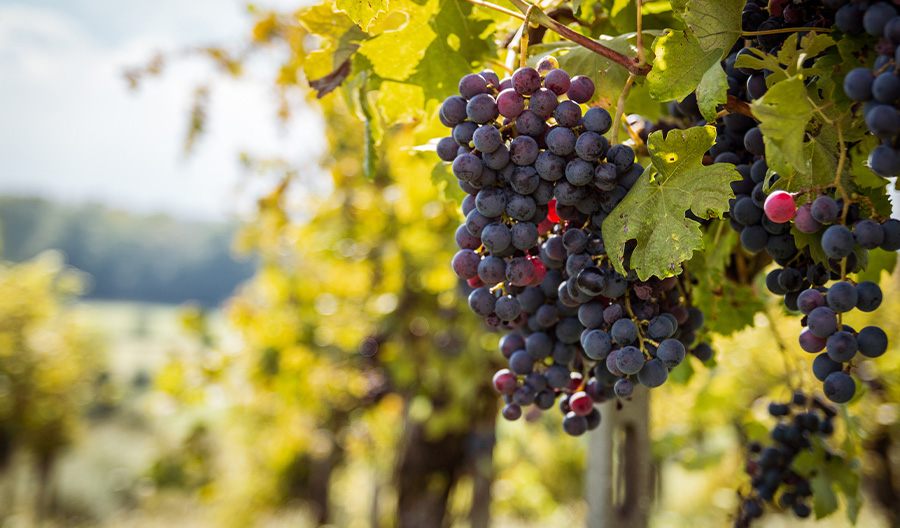Strolling Piazza San Marco. Sailing the Venetian lagoon. Criss-crossing the undulating hills of Valpolicella. This romanticized notion of Veneto, home to Italy’s beloved cities of Venice and Verona, encompasses some measure of truth. Even its macroclimates are diverse, from the foothills of the Alps in the north, Lake Garda to the west and the Adriatic Sea to the southeast.
As a wine region, Veneto brings heft and history to the table. Its importance is in part due to the volume of Pinot Grigio it produces, and the massive growth in demand for Prosecco. However, continued recognition for other wines from the region, such as Valpolicella, Amarone, and Bardolino, helps keep Veneto in the spotlight.
Here’s what you need to know about the wines of this historic region.
Valpolicella
With the Alps as its upper frontier, Valpolicella spans about 95 square miles across western Veneto. To the south is Verona, the dreamy city and home to star-crossed lovers Romeo and Juliet. To the north and east sit the Lessini Mountains, strewn with splendid pink stone villas and ancient churches. The west is the playground of Lake Garda. Throughout the area, vineyards comprise a patchwork of Veronese pergolas framed in old stone walls.
Valpolicella’s distinct wines have found favor across global markets. From soft and approachable wines labeled with the broad Valpolicella Denominazione di Origine Controllata (DOC) to the rich and concentrated Amarone della Valpolicella Denominazione di Origine Controllata e Garantita (DOCG), there’s a style to suit every palate across a wide price range.
Grapes and Terroir
The main grapes used in the denominations of Valpolicella are Corvina, Corvinone, Rondinella and Molinara. Corvina serves as the dominant base for most higher-quality wines. Typically, Valpolicella’s wine is dry, fruity and juicy. It brims with red fruits and a trademark sour cherry note.
The best vineyard sites fall around the Classico zone, the traditional growing areas near the villages of Fumane, Marano and Negrar. The warmer, well-drained slopes often comprised of calcareous, volcanic and clay-rich soils, deliver Corvina of fuller body and flavor than fruit from the plains.

Valpolicella’s Four Styles of Wine
This area, more than any other Italian red, produces wines of style. That means the winemaker plays as much a role in the wine as terroir and fruit character.
The four key styles, from least to most intensity are: Valpolicella, Valpolicella Ripasso, Amarone della Valpolicella and Recioto della Valpolicella. All are predominately made with the same grapes (Corvina, Corvinone, Rondinella and Molinara) so it’s winemaking technique that distinguishes them.
Valpolicella DOC leans fresh, quaffable and fruity. Because it tends to be light in profile, some winemakers employ techniques to achieve greater depth, complexity and richness.
Valpolicella Ripasso DOC is a more intense version of Valpolicella. Ripasso refers to the method of production, or “re-pass,” a category of wine awarded DOC status in 2010. First, winemakers ferment a basic Valpolicella DOC. Next, they start a second fermentation using the pomace of grape skins left over from Amarone and Recioto (see below). This method melds the soft and supple character of Valpolicella with the slightly bitter and raisin-like notes of Amarone and Recioto to forge a fuller, deeper wine.
Amarone della Valpolicella DOCG became an international phenomenon in the 1990s. The name Amarone means “big bitter,” yet despite this moniker, consumer reaction to this bold wine has made it a global success. At its best, Amarone shows beguiling concentration and structure balanced by plushness and elegance. Flavors of dark berries, cocoa and raisin are a result of the winemaking style. Amarone is made with grapes that are dried on mats or hung from rafters for weeks or months after harvest. This process, called appassimento, concentrates the flavors and sugars. The shriveled grapes are then fermented to dryness, which results in a big, rich wine with robust alcohol levels that can near 17% alcohol by volume (abv).
Recioto della Valpolicella DOCG is a passito-style dessert wine made from dried grapes. While similar to the process for Amarone, the fruit for these wines is dried for 100 to 200 days, further concentrating the flavors and sugar. The grapes are then vinified, but fermentation is stopped before all of the sugar converts to alcohol, which creates a sweet wine with bright natural acidity.
Bardolino
Set along the southeastern shores of Lake Garda, Bardolino is a heaven for wine grapes. Growing conditions are excellent, from bright sunshine to the temperature-moderating influence of the lake and fresh breezes that dry the rain. The region earned its status as a DOC in 1968.
Grapes used for this dry red overlap with those in Valpolicella, namely Corvina, Corvinone, Rondinella and Molinara. The wines are fruity and fragrant. Aromas of red cherry, black fruit and baking spice carry through to the palate, which has fine tannins, juicy acidity and a hint of saltiness.
Production is focused around a chain of hills with morainic soil, a fancy term for glacial debris. Bardolino Classico wines come from traditional growing areas on the hills, a boundary created to add a quality distinction from regular Bardolino that often hails from the plains. The DOC imposes more stringent production rules on Bardolino Classico wines than Bardolino.
Another quality tier was added in 2001: Bardolino Superiore DOCG. These wines must contain a minimum of 12% alcohol (against 10.5% for Bardolino DOC) and be aged at least one year before release. For the top wines of Bardolino, look for Bardolino Superiore Classico.

